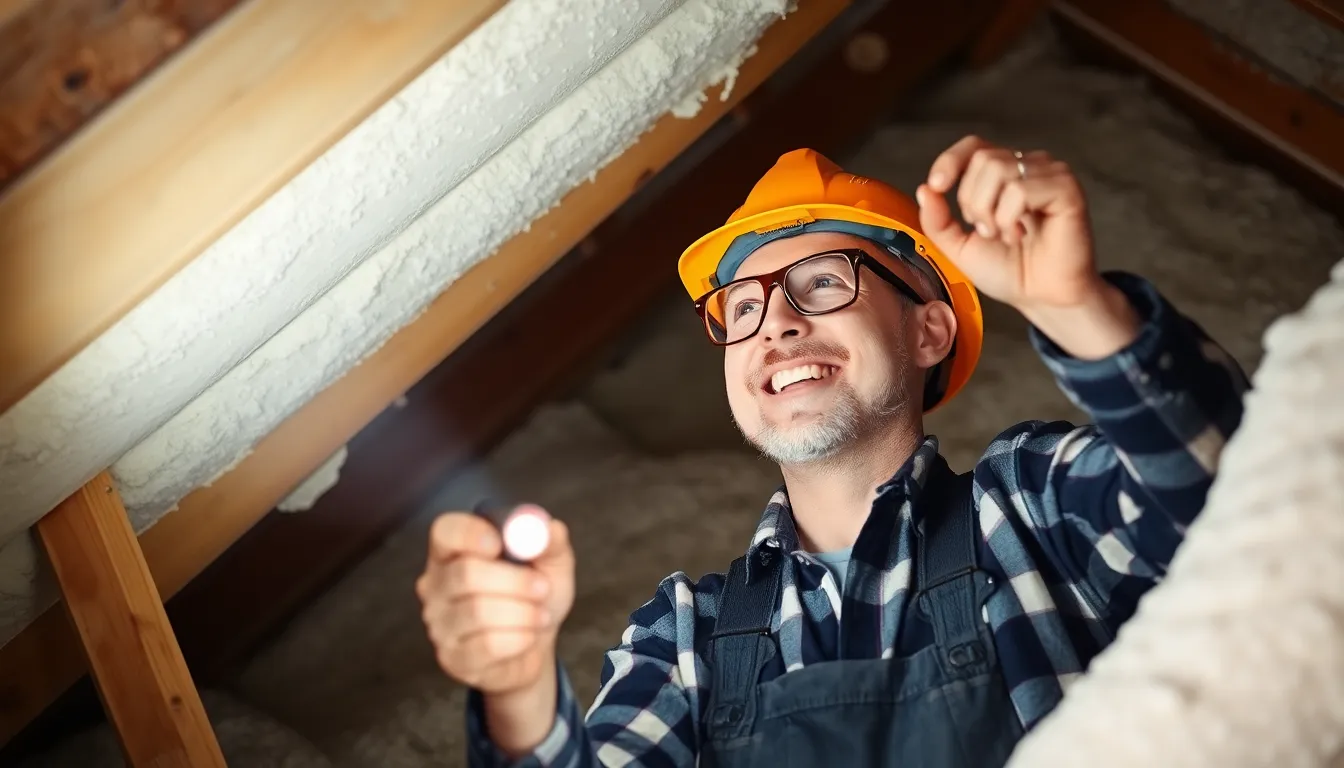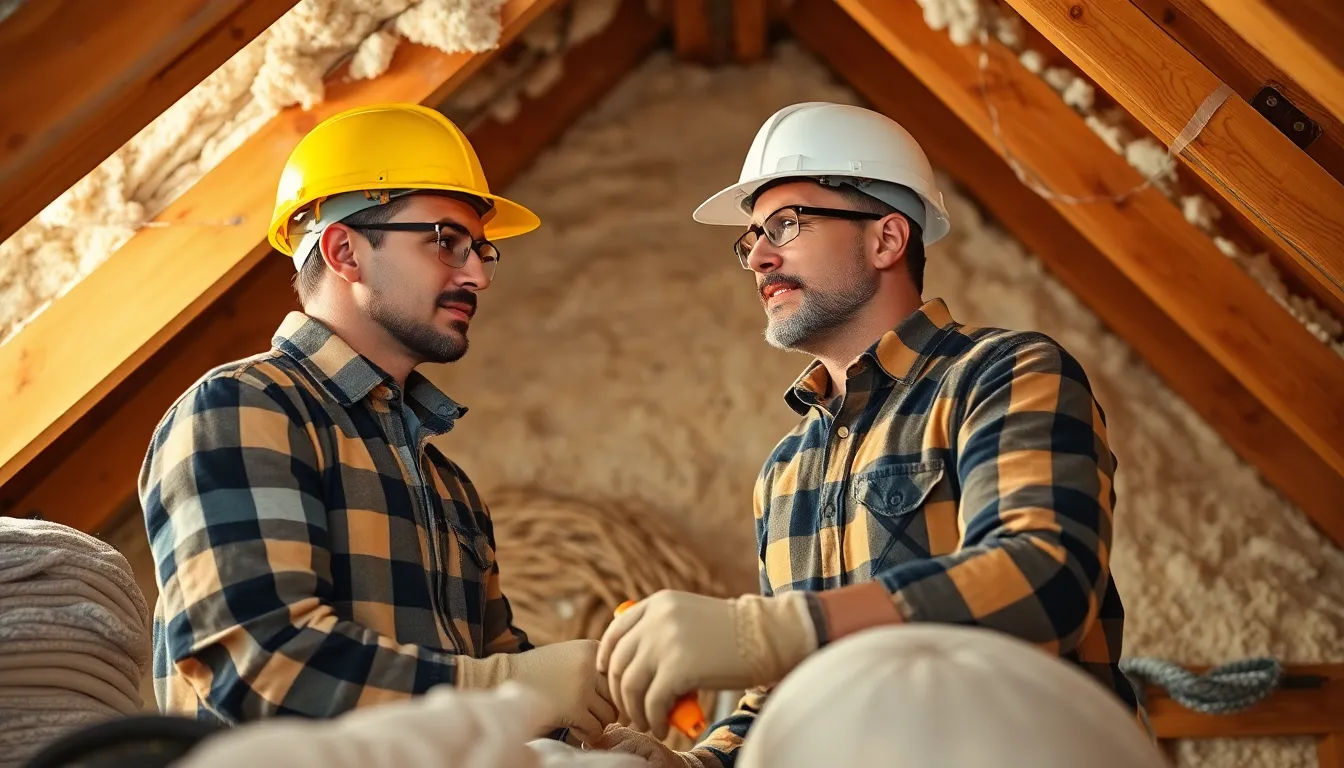In a world where energy bills seem to rise faster than a cat on a hot tin roof, saving money at home has never been more important. Home energy savings aren’t just about keeping your wallet happy; they’re also about giving Mother Nature a well-deserved hug. Imagine slashing those bills while reducing your carbon footprint—sounds like a win-win, right?
With a little creativity and some savvy tips, anyone can turn their home into an energy-efficient paradise. From quirky gadgets to simple lifestyle tweaks, the journey to energy savings can be both fun and rewarding. So grab a cup of coffee, kick back, and discover how to transform your home into a lean, green energy-saving machine. After all, who wouldn’t want to save a few bucks while saving the planet?
Table of Contents
ToggleUnderstanding Home Energy Savings
Home energy savings refers to strategies and practices that reduce energy consumption in residential spaces. Implementing these tactics leads to lowered energy bills and contributes positively to the environment.
What Are Home Energy Savings?
Home energy savings involve reducing energy use through efficient appliances, insulation, and better habits. For example, using LED bulbs instead of traditional incandescent ones consumes up to 75% less energy. Smart thermostats adjust temperatures automatically, maximizing efficiency while minimizing waste. Adopting energy-efficient appliances can cut energy use significantly. Every small change contributes to substantial savings over time, creating a more sustainable lifestyle.
Importance of Home Energy Efficiency
Home energy efficiency holds immense significance for both financial and environmental reasons. By conserving energy, homeowners reduce monthly bills, leaving more budget for other needs. Energy-efficient homes often have higher property values, attracting potential buyers. Environmentally, reducing energy consumption leads to decreased carbon emissions, supporting global climate goals. Implementing energy-saving measures fosters a healthier environment, benefiting both current and future generations. Prioritizing efficiency not only enhances comfort but also contributes to a broader movement toward sustainability.
Strategies for Achieving Home Energy Savings


Home energy savings involve practical methods that lead to reduced energy consumption and lower bills. Implementing effective strategies ensures financial savings and contributes positively to the environment.
Conducting a Home Energy Audit
A home energy audit identifies areas where energy efficiency can improve. Homeowners benefit from professional audits or DIY assessments that evaluate insulation, heating, and cooling systems. Identifying drafts and inefficient appliances is crucial. When sealing gaps, prioritizing areas around windows and doors maximizes energy retention. An audit highlights specific upgrades that can further decrease utility costs after the initial evaluation.
Insulation and Weatherization Techniques
Insulation plays a significant role in maintaining comfortable indoor temperatures. Effective insulation materials, such as foam boards or spray foam, reduce heat transfer. Homeowners benefit from achieving better energy efficiency when properly insulating attics, walls, and floors. Weatherization techniques enhance energy conservation by sealing leaks, using caulking or weatherstripping. These methods help protect homes from air leaks and moisture damage, ultimately leading to lower heating and cooling costs.
Energy-Efficient Appliances
Energy-efficient appliances play a crucial role in reducing home energy consumption. These devices use advanced technology to minimize energy use while maintaining high performance.
Choosing the Right Appliances
Selecting energy-efficient appliances starts with looking for the Energy Star label. This designation indicates that the product meets strict efficiency guidelines set by the EPA. Consider the specific function of each appliance; for example, replacing older refrigerators can lead to savings of $200 or more annually. Opt for models that offer adjustable settings since they provide flexibility based on usage. Examine the appliance’s energy consumption in kilowatt-hours; this figure clarifies potential energy costs. Reading customer reviews can also provide insight into long-term reliability.
Benefits of Smart Technology
Smart technology enhances appliance efficiency through automation. Programmable features allow owners to set schedules that align with utility rates, optimizing energy use. For instance, smart thermostats can reduce heating and cooling costs by adjusting temperatures when no one is home. Remote monitoring enables real-time adjustments, promoting energy savings. Integration with home networks simplifies control over appliances, making it easier to manage usage. In addition to financial savings, utilizing smart technology contributes to environmental goals by lowering overall energy consumption.
Renewable Energy Options
Renewable energy options offer effective ways to enhance home energy savings. Exploring these alternatives can lead to reduced utility bills and a smaller environmental impact.
Solar Power
Solar power stands out as a popular choice for homeowners seeking energy savings. Investing in solar panels can provide substantial savings on electricity bills, especially during sunny months. Federal tax incentives and state rebates can further reduce upfront costs, encouraging adoption. Homeowners can power their homes cost-effectively with solar energy while decreasing reliance on fossil fuels. Systems typically require minimal maintenance and can last for decades, providing long-term savings.
Wind Energy Solutions
Wind energy solutions also present viable options for energy savings. Small-scale wind turbines can generate significant electricity for residential use in areas with consistent wind patterns. Homeowners can enjoy lower utility bills by using wind-generated energy. Incentives and grants often support the installation of wind systems, lowering financial barriers. With the right conditions, wind energy can complement solar power, creating a robust, renewable energy ecosystem that maximizes savings.
Behavioral Changes for Energy Savings
Behavioral changes play a crucial role in achieving energy savings at home. Implementing simple habits daily contributes to reduced energy consumption.
Simple Daily Habits
Turning off lights when leaving a room ensures unnecessary electricity isn’t wasted. Lowering the thermostat during winter leads to significant savings on heating bills. Unplugging chargers and electronics when not in use prevents phantom energy drain. Using natural light whenever possible reduces reliance on artificial lighting. Setting the dishwasher to run only with full loads maximizes water and energy efficiency. Adjusting the washing machine to cold settings saves energy while cleaning clothes effectively. These daily habits lead to noticeable reductions in energy usage and costs.
Educating Household Members
Teaching household members about energy efficiency fosters a collective commitment to savings. Sharing knowledge about energy-saving practices creates awareness and motivation. Discussing the importance of turning off lights and unplugging devices encourages responsible usage. Involving everyone in setting energy-saving goals enhances accountability. Organizing a family energy audit can highlight areas needing improvement. Providing updates on energy bills motivates the adoption of more sustainable habits. Educating each member ensures that everyone understands their role in achieving overall energy savings.






